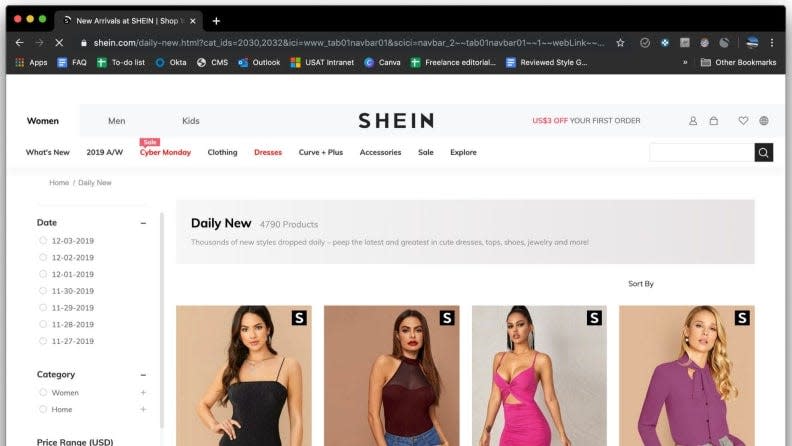Banks Vadeboncoeur: Hazardous waste, child labor and other costs of ‘fast fashion'
Fast fashion can be described as being "fast" in several ways: how quickly fashion trends change, how rapidly products are produced, how swiftly customers decide to buy something, how promptly packages are delivered and how hastily clothes are worn before being thrown out of the closet.
Conversations on fashion, sustainability and environmental awareness now frequently include the term "fast fashion." The phrase refers to cheaply produced and priced items that replicate the latest catwalk styles. These pieces get circulated through stores swiftly in order to capitalize on current trends.
Why is it an issue?
According to Business Insider, 10% of the world's carbon emissions come from the fashion industry, which is comparable to the European Union. Because of the energy used in the production, manufacturing and transportation of the million items bought each year, the global fashion business produces a lot of greenhouse emissions.
'Luxury is hot':Brand names high on the list for Jacksonville shoppers
Banks Vadeboncoeur: Abortion must be truly accessible, not just technically lawful
Letters:Neptune Beach nonprofit erases barriers, stigma of mental health care
The majority of our clothing is made of synthetic fibers (polyester, acrylic, nylon, etc.), which need more energy to produce than natural fibers do.
Furthermore, untreated hazardous wastewater from textile manufacturers is typically released into rivers in the majority of the countries where clothing is manufactured. Wastewater can contain a variety of hazardous substances, including lead, mercury and arsenic. Millions of people who live near those river banks are adversely affected, as well as the aquatic life. Additionally, the contamination enters the ocean before eventually spreading worldwide. 500,000 tons of microfibers, which is equal to roughly 50 billion plastic bottles, are released into the ocean every year just from washing clothes.
Lucy Siegle, a British environmental journalist, made the following observation: “Fast fashion is not free. Someone, somewhere is paying the price.” Fast fashion's detrimental impacts extend beyond the environment. In reality, the industry contributes to societal problems, particularly in emerging markets. According to the organization Remake, young women between the ages of 18 and 24 manufacture 80% of apparel. A 2018 U.S. Department of Labor study discovered that forced and child labor was utilized in the fashion industry in Argentina, Bangladesh, Brazil, China, India, Indonesia, the Philippines, Turkey, Vietnam and other nations. As a result of high production, sales and profits take precedence above human welfare.

What can you do?
There are multiple ways that we can be thoughtful citizens and shop sustainably. First, when it comes to shopping for clothing, wearing an item as frequently and as long as you can is the greatest, most sustainable thing you can do. Even if they are made of all-natural fibers or by a "sustainable brand,” replacing your clothing or constantly getting new styles is a bad habit.
Next, think about where your garments are made and the distance they had to travel. A sustainable practice is to shop locally in order to cut down on shipping emissions. If you are shopping online, however, be sure to group your purchases and choose the slowest delivery option. Because every online purchase requires a delivery vehicle, it's best to order multiple items at once. Retailers can often load all of the products into a single box (or at least get everything into the same truck), allowing you to conduct all of your shopping in a single "trip," but purchasing one or two items at a time loses that efficiency since every individual order adds an additional delivery trip.
Finally, an easy way to avoid the issues of fast fashion is to purchase used items from thrift stores and charity shops. This gives clothing a “new life,” and the experience can be fun when looking through different and previous fashion trends. If you are unable to visit the real stores, many offer merchandise for purchase on their website for quick online buying. Poshmark and thredUP are both great places to purchase and sell used clothing.
Ultimately, fast fashion is a massive global issue. However, if we each make small changes in our shopping habits, we can together decrease the likelihood of major future implications.

Banks Vadeboncoeur is a sophomore at Ponte Vedra High School. She loves to write and hopes to have a career in journalism.
This guest column is the opinion of the author and does not necessarily represent the views of the Times-Union. We welcome a diversity of opinions.
This article originally appeared on Florida Times-Union: Sustainability, child labor just some hidden costs of 'fast fashion'

